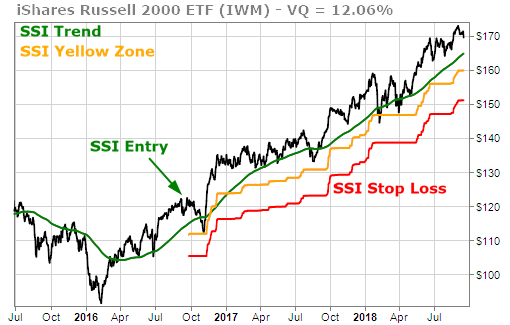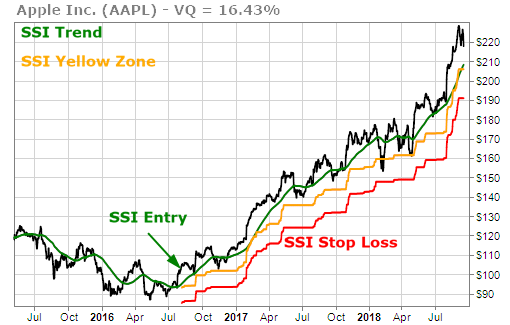Dr. Walter Mischel died last week at the age of 88. Most people don’t know his name. But they do remember the famous experiment he devised.
Dr. Mischel helped lay the groundwork for a psychology revolution with his work in the 1960s (and follow-up studies decades later in the 1980s). He changed the field of psychology forever, creating a path for the Nobel Prize-winning behavioral research that followed.
Dr. Mischel was best known for the “marshmallow test,” a study that became famous enough to enter the popular culture. But the implications of the marshmallow test — especially for investors — have far more power than most realize.
At Stanford University in the early 1960s, Dr. Mischel and his team created an experiment to test the willpower of preschool children.
The kids received various types of treats — including marshmallows — with instructions to wait before eating the treat. Those who waited 15 minutes to eat the marshmallow were rewarded with a second marshmallow.
As part of the test, the researchers taught self-discipline strategies to some of the preschoolers. Others were left to make decisions on their own.
The cultural breakthrough for the marshmallow test came more than two decades later, in the 1980s, when Dr. Mischel and two colleagues did follow-ups with 100 parents whose children participated in the original tests.
What they found in the follow-ups, after the kids had grown into young adults, was that the preschoolers who had put off eating the marshmallow had higher scores on college preparation tests. They also appeared more emotionally well-adjusted.
The study was a popular sensation. It seemed that whether a child could wait 15 minutes to eat a marshmallow had a say in whether they would win at life. The ability to practice “delayed gratification” was seen as a key success trait.
The actual marshmallow test had a small sample size, and the impact of the findings was exaggerated. But the study changed the world regardless, by having a revolutionary impact on the field of psychology and introducing the concepts of self-control and “grit” to millions.
In the 1950s, Dr. Mischel was frustrated by the state of psychology at the time. Popular ideas back then centered around Freudian desires — the notion that everyone is ruled by conflicts in the subconscious mind.
In the 1950s and 1960s, there was also a common assumption that personality traits were stable and static, becoming fixed in a person early on and not changing over time.
Dr. Mischel wanted to change that perception. He saw that psychology and behavior traits were a more fluid thing … and that behavior could be changed for the better.
“The proposed approach to personality psychology,” Dr. Mischel once wrote, “recognizes that a person’s behavior changes the situations of his life as well as being changed by them.”
It seems a commonplace idea now — the belief that behavior has an impact on life outcomes and vice versa, and that changes can be made for the better. But it took a revolutionary thinker like Dr. Mischel to change the conventional wisdom from the fixed, static and Freudian notions of the day.
And for investors, the delayed gratification of the marshmallow test isn’t just some abstract idea — it is a crucial source of investing success.
For the preschoolers in the study, delayed gratification meant waiting 15 minutes to eat the marshmallow in order to earn a second one.
For a successful investor, delayed gratification could mean waiting 15 weeks … 15 months … or even 15 years to sell a winning investment.
The stock market works in such a way that a handful of winning investment trends can last longer than the others. Sometimes these winning trends last for a long, long time. And the key to success is having the delayed gratification capability of not preemptively cutting off these trends, but simply riding them.
Let’s look at one or two examples of what this means.
Below you can see a chart for IWM, the iShares Russell 2000 small caps ETF. As of this writing, the one-year change for IWM is almost 20%. The three-year change is a positive gain of more than 50%.

The IWM small caps ETF has been in the SSI “Green Zone” for nearly two years. You can see it running along the bottom of the SSI (Stock State Indicator) chart.
It has been steady green almost the entire time, with only the tiniest of dips into the Yellow Zone (that saw an immediate reverse back higher).
This is where delayed gratification comes in. An investor with a winning psychology profile, who had established a profitable position in small-cap stocks, might say something like: “I’m going to ride this winning trend as long as we stay positive.” This would help them capture a far bigger piece of the trend.
We can see an even more powerful example via Apple stock (symbol AAPL). One might say investing in AAPL was the ultimate marshmallow test.
Over the past year as of this writing, AAPL has advanced nearly 40%. Over the past three years, it has gained more than 100%. As the chart below shows, AAPL entered the Green Zone in the summer of 2016 and basically never looked back.

But the other half of the battle is seeking a full measure of gains from the strongest trends when they come.
That involves delayed gratification — the investor’s version of the marshmallow test. We can be grateful to Dr. Walter Mischel for introducing the delayed gratification concept to the world, and forever changing the field of psychology for the better in doing so.
And we can use investment software tools — particularly the SSI — to help identify investments in the Green Zone to stay with those trends as they unfold. Thanks, Dr. Mischel.





